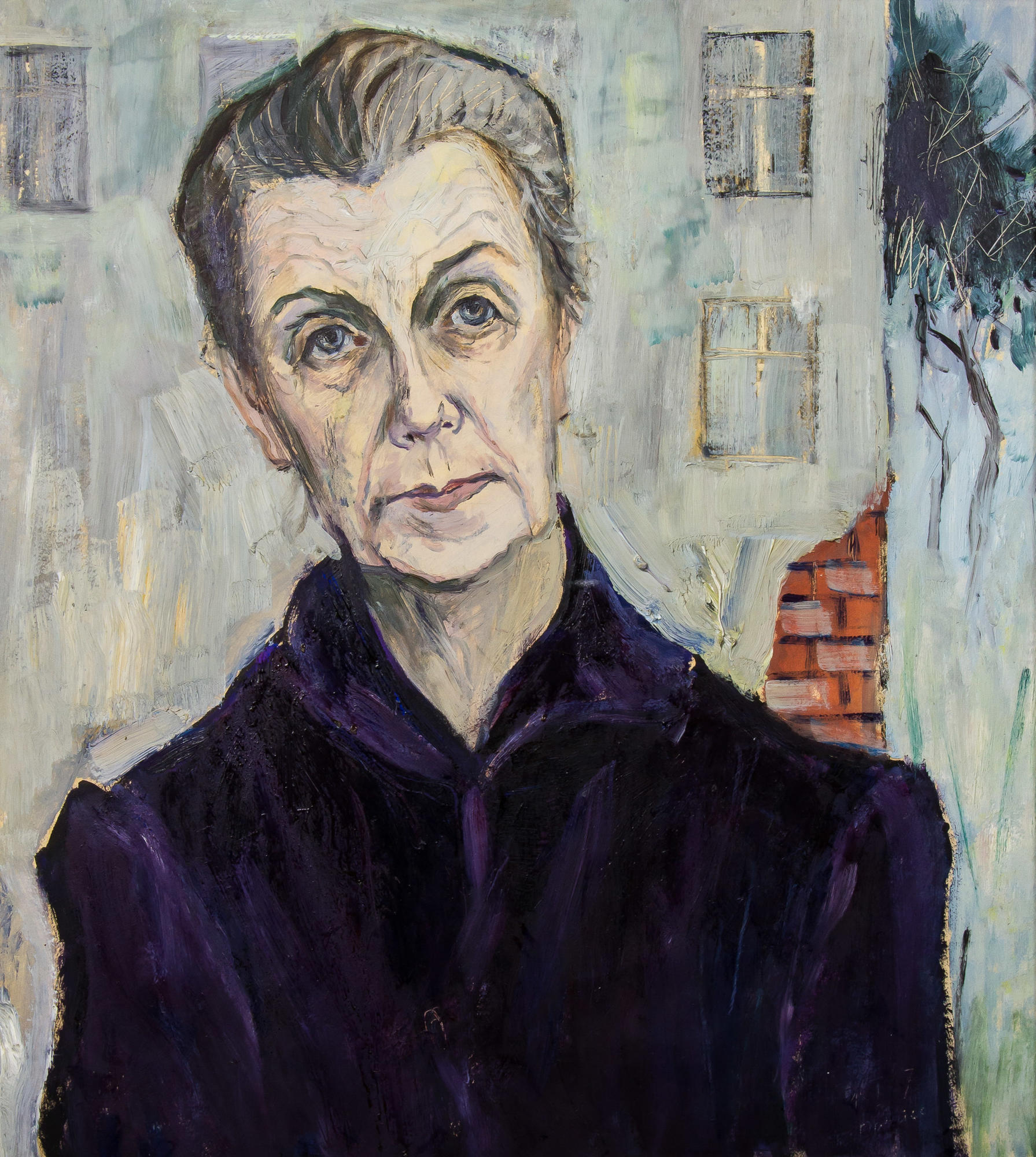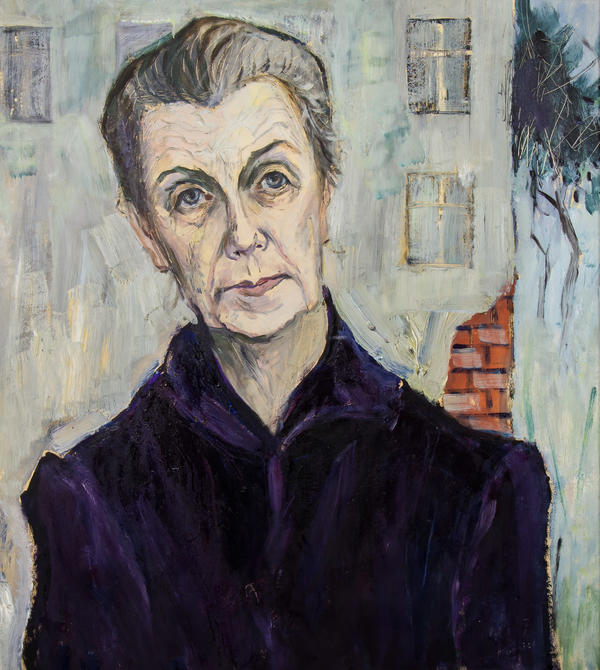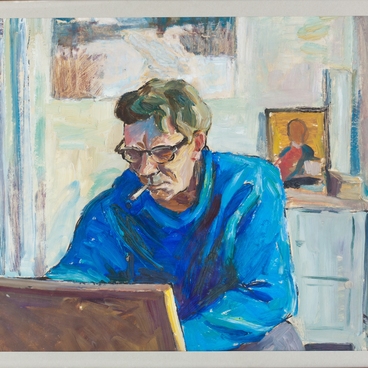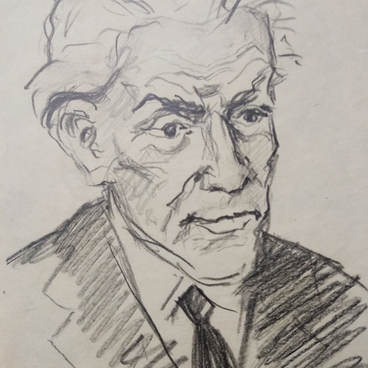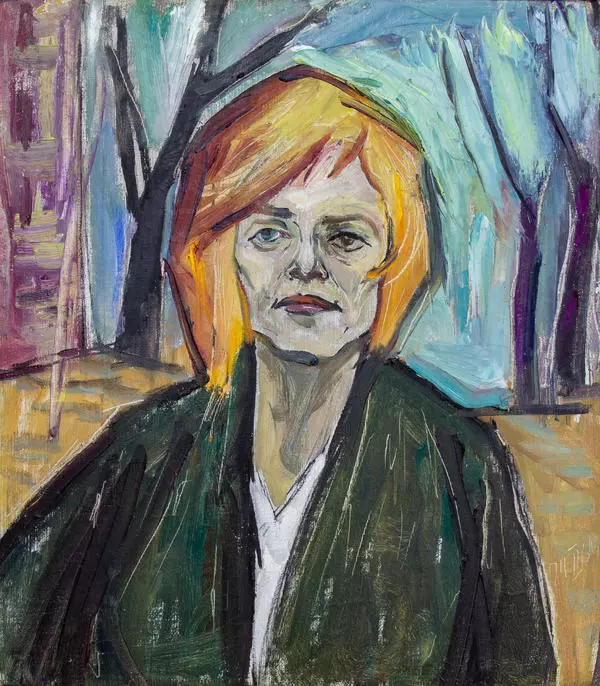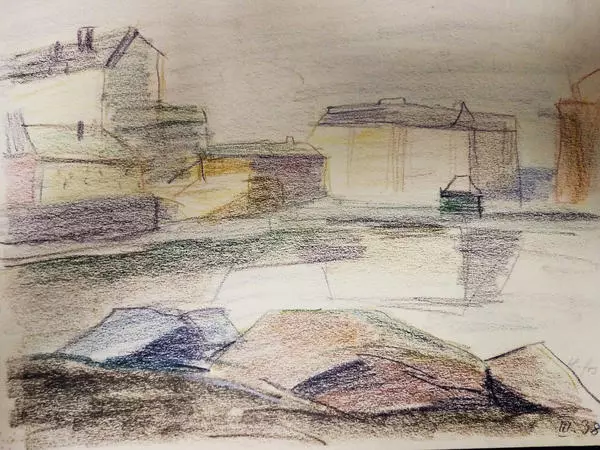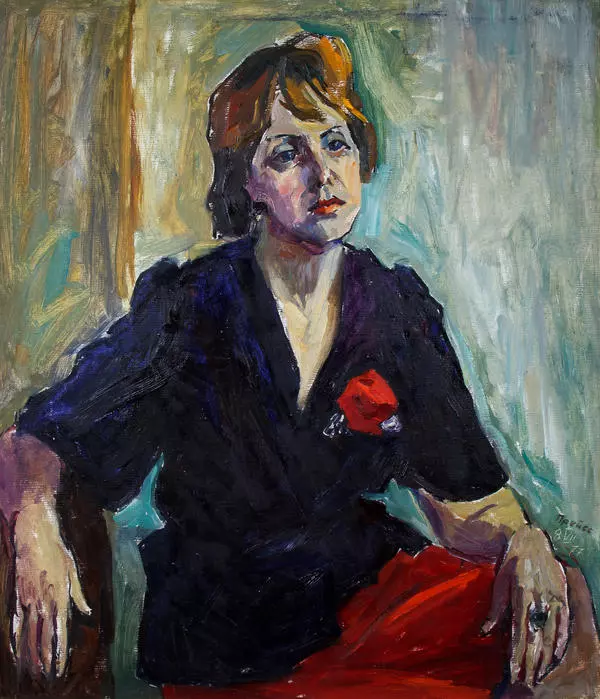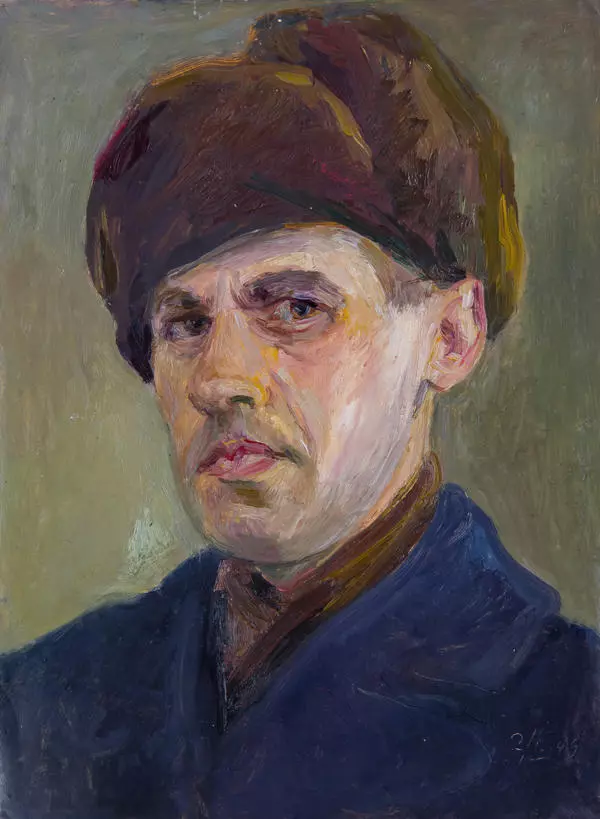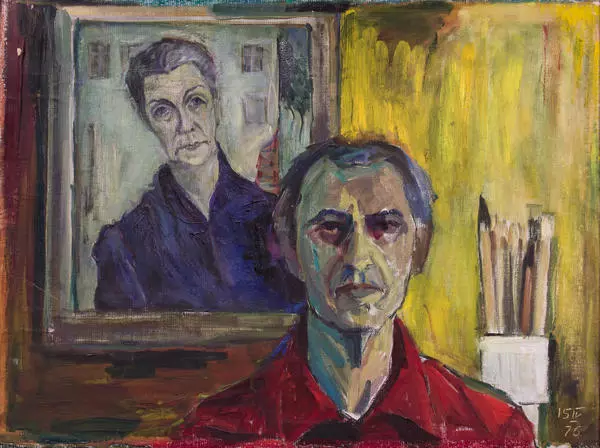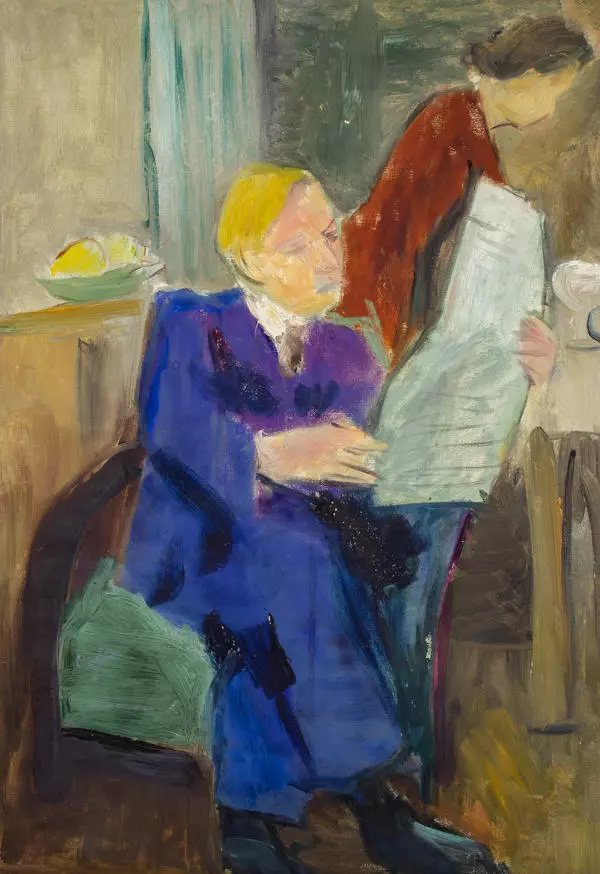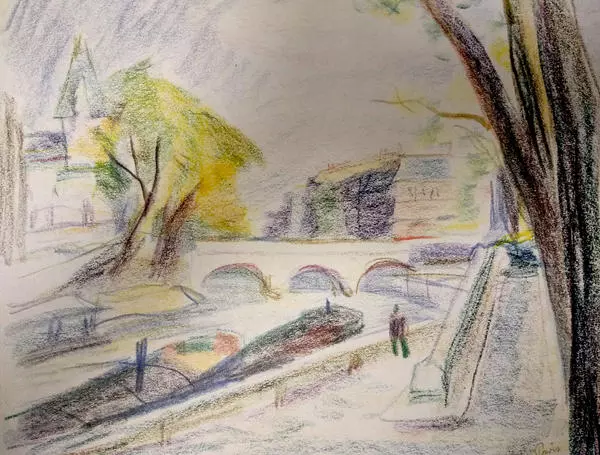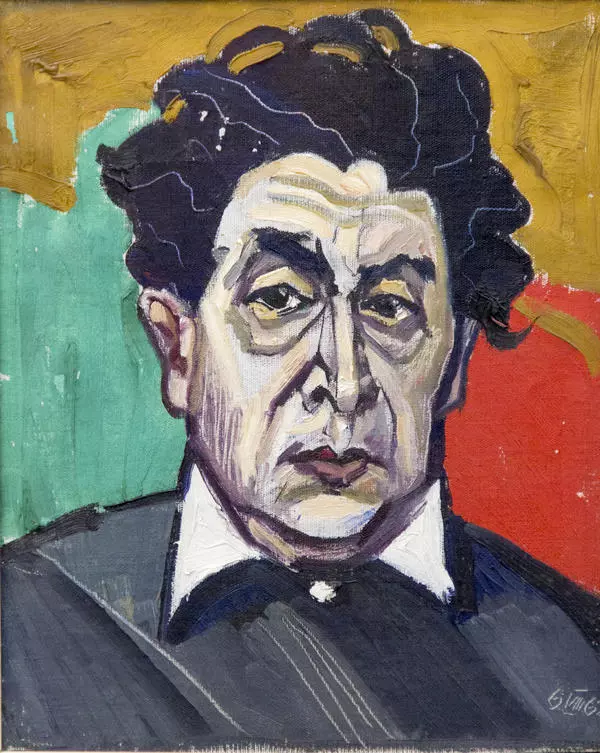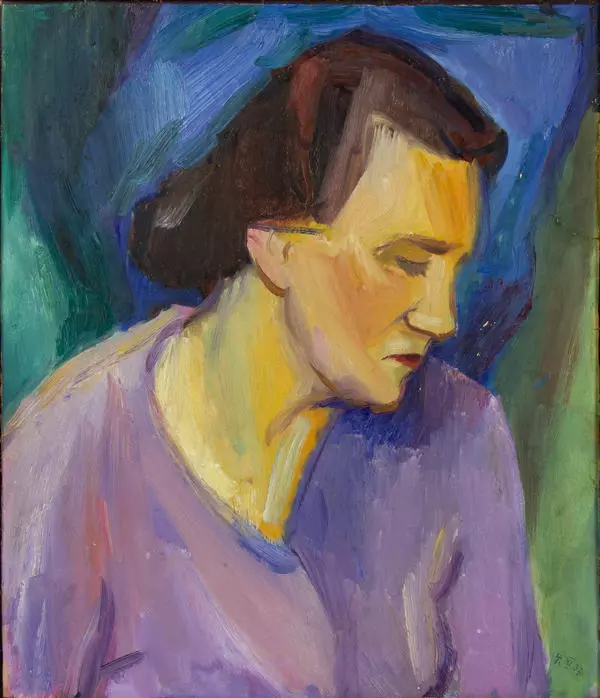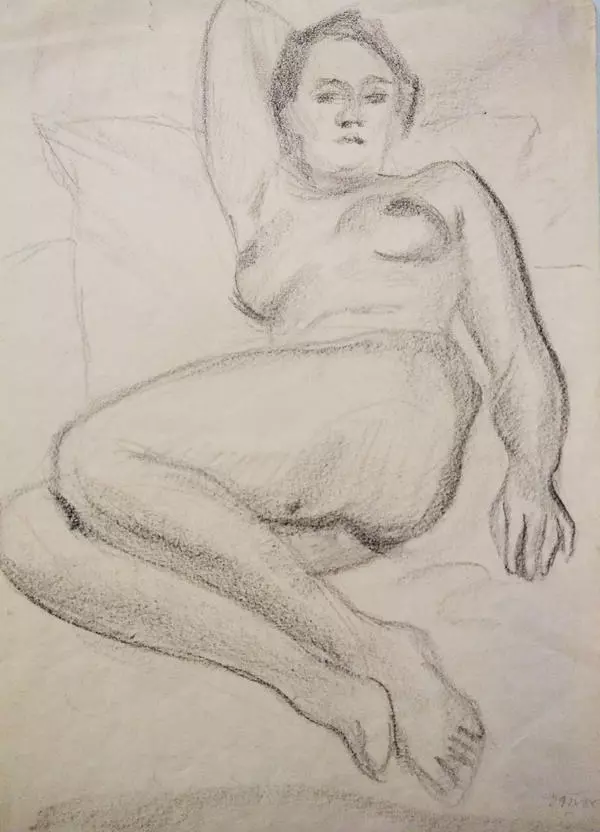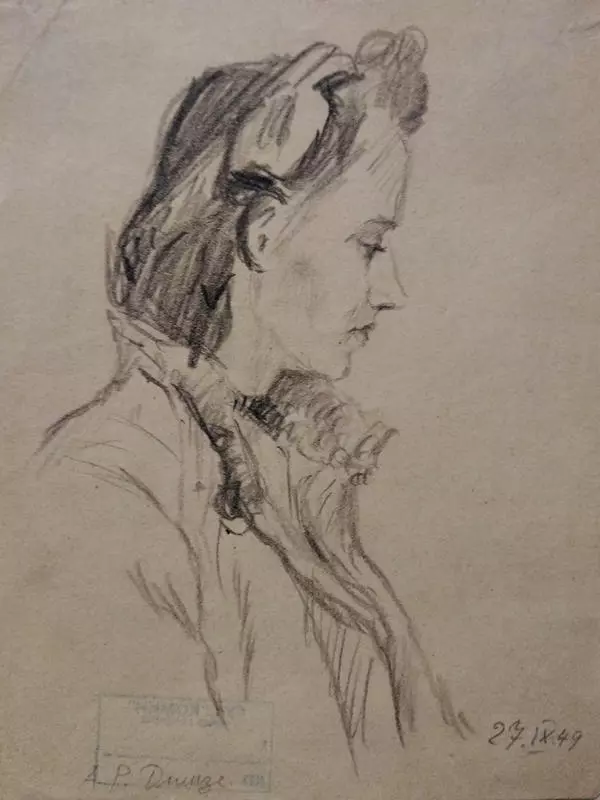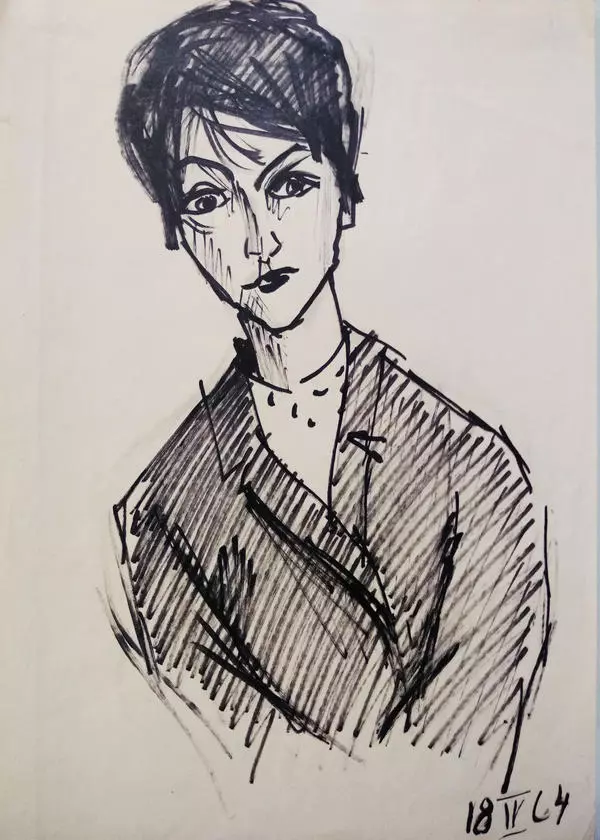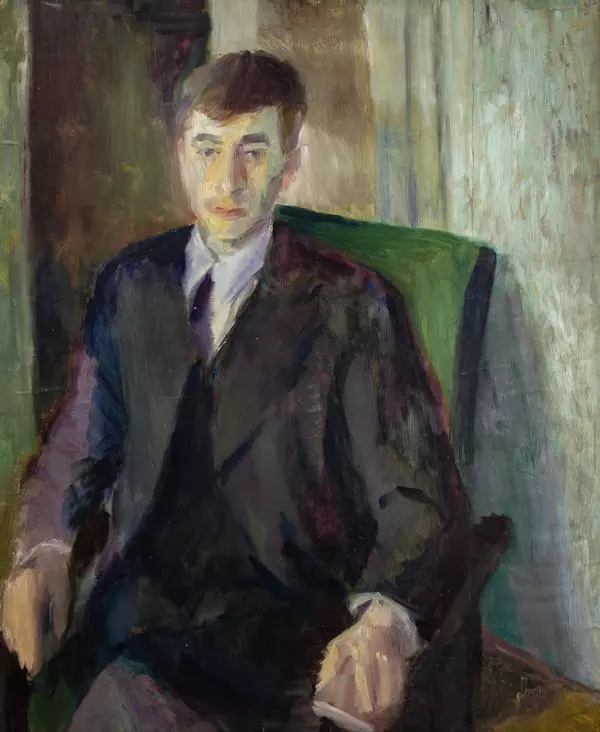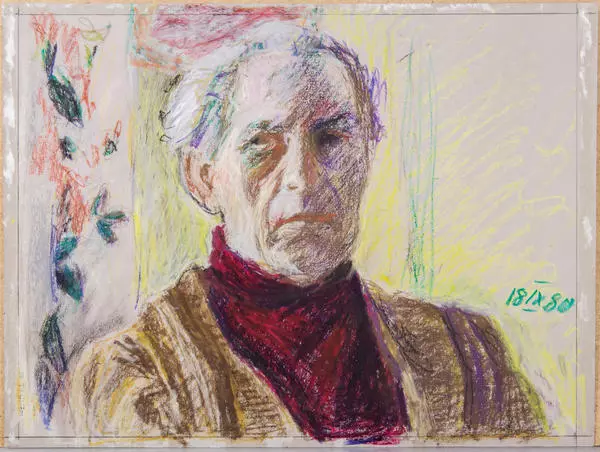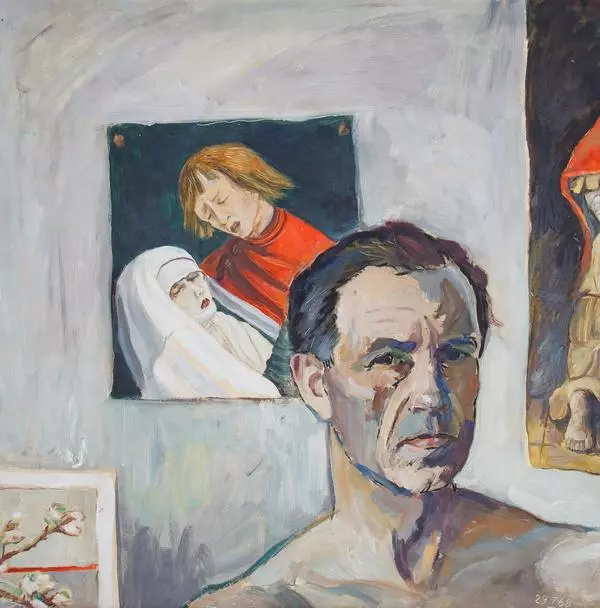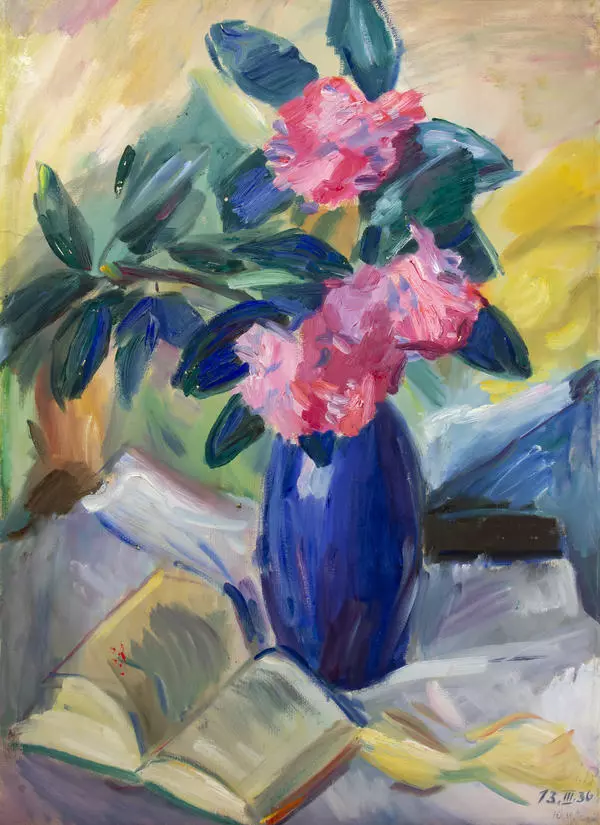Artist Jurgis Preiss was born in Königsberg, East Prussia, on 1 September 1904. His real name was Hans Richard. He graduated from the Königsberg Academy of Arts; then he worked as a military intelligence officer, later emigrated to the USSR and 1939 he was granted Soviet citizenship and changed his name. When the war began, Preiss was sent to Siberia, due to his nationality. The artist settled in the city of Kemerovo in the 1950s. The local regional museum has a set of works by Jurgis Preiss, and this collection is the same age as the museum itself.
The exhibited portrait of Jurgis Preiss’ mother belongs to the Kemerovo period in his work, which was the longest one and lasted from 1956 to 1984. The artist lived and worked in Berlin in the first half of the 1960s, when he went on a tour of the Baltic states under Soviet rule. It was then that he visited the city where he had been born, Königsberg, which had become Kaliningrad by that time. During the Khrushchev thaw, the artist returned to minor genres, light colours and airy brushwork. Yet, new motifs started to emerge in his work at that time. Preiss began to do portraits based on his distant memories, personal impressions and associations. Many of those paintings are autobiographical.
One of such paintings is Portrait of Mother of 1967, which was one of the centrepieces of his work. The artist painted the portrait after his trip to Königsberg (today’s Kaliningrad), where he had not been since 1933. The encounter with the past rekindled his memories of bygone times and his desire to express himself. The portrait shows Luise Preuss as an aged woman, who looks calm and a bit tired. She has grey hair, swept back smoothly, and narrow sloping shoulders. The woman seems deep in thought, abstracted, and her face, turned directly to the viewer, reflects deep-seated sorrow. The maternal image created by the painter is deeply lyrical.
The exhibited portrait of Jurgis Preiss’ mother belongs to the Kemerovo period in his work, which was the longest one and lasted from 1956 to 1984. The artist lived and worked in Berlin in the first half of the 1960s, when he went on a tour of the Baltic states under Soviet rule. It was then that he visited the city where he had been born, Königsberg, which had become Kaliningrad by that time. During the Khrushchev thaw, the artist returned to minor genres, light colours and airy brushwork. Yet, new motifs started to emerge in his work at that time. Preiss began to do portraits based on his distant memories, personal impressions and associations. Many of those paintings are autobiographical.
One of such paintings is Portrait of Mother of 1967, which was one of the centrepieces of his work. The artist painted the portrait after his trip to Königsberg (today’s Kaliningrad), where he had not been since 1933. The encounter with the past rekindled his memories of bygone times and his desire to express himself. The portrait shows Luise Preuss as an aged woman, who looks calm and a bit tired. She has grey hair, swept back smoothly, and narrow sloping shoulders. The woman seems deep in thought, abstracted, and her face, turned directly to the viewer, reflects deep-seated sorrow. The maternal image created by the painter is deeply lyrical.
